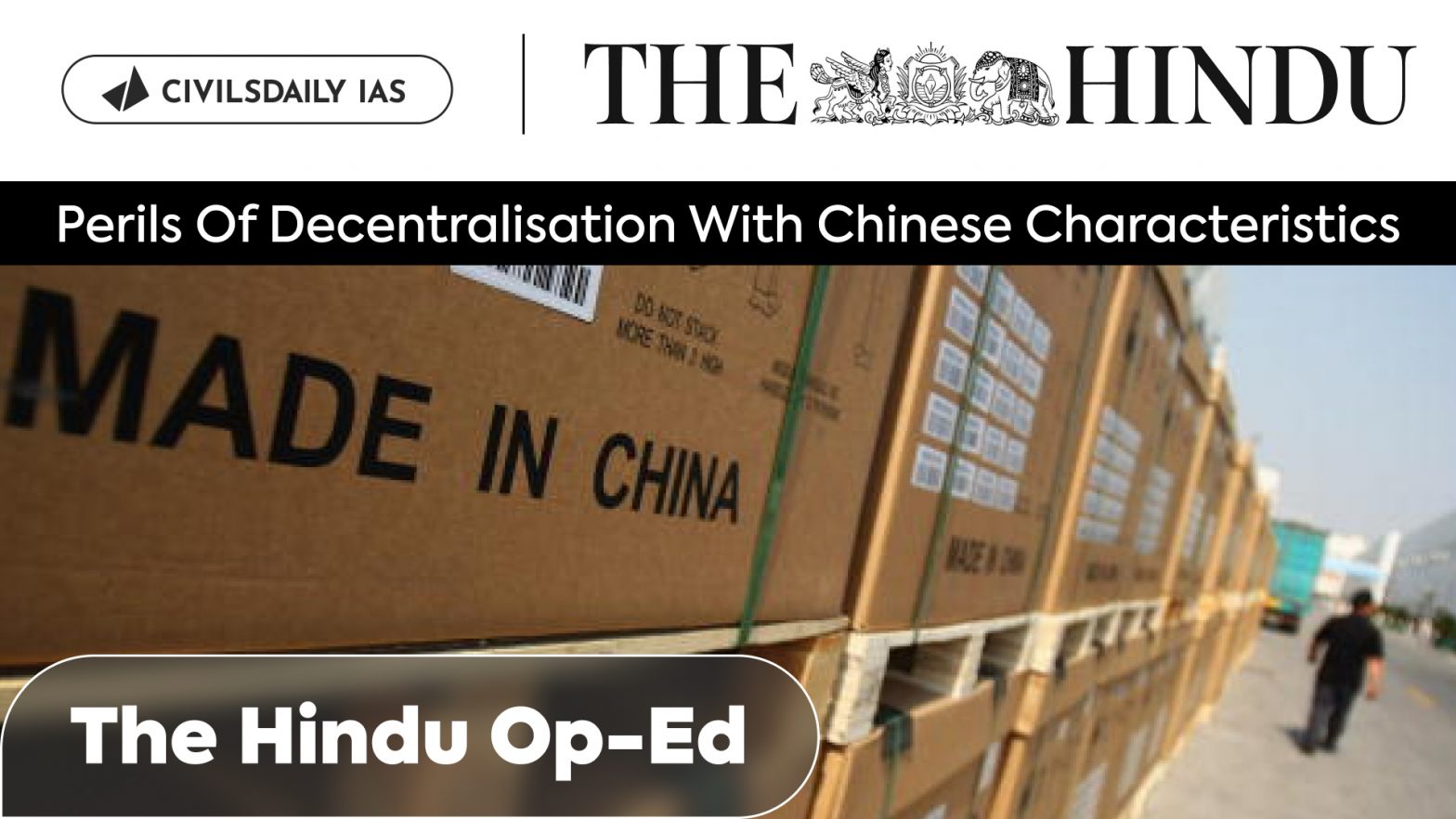| PYQ Relevance: Q “The USA is facing an existential threat in the form of China, that is much more challenging than the erstwhile Soviet Union.” Explain. (UPSC IAS/2021) Q ‘China is using its economic relations and positive trade surplus as tools to develop potential military power status in Asia’, In the light of this statement, discuss its impact on India as her neighbor. (UPSC IAS/2017) Q. The China-Pakistan Economic Corridor (CPEC) is viewed as a cardinal subset of China’s larger ‘One Belt One Road’ initiative. Give a brief description of CPEC and enumerate the reasons why India has distanced itself from the same. (UPSC IAS/2018) |
Mentor comment: In the Indian context, there is a need for improved infrastructure to support economic growth and facilitate investment, which requires coordinated efforts at both state and national levels. While prioritizing industrial growth, it is essential to balance this with the provision of public services to ensure comprehensive development. We can learn from the experience of our neighbour – China.
China’s decentralized policy has become a threat to itself. China’s decentralized policy initially spurred economic growth. Still, it has now become a source of structural inefficiencies, regional disparities, ineffective investments, and governance challenges that threaten the country’s long-term stability and development.
_
Let’s learn!
Why in the News?
PM urged the states to compete with each other to attract investors. The difference was highlighted with India’s more centralised system where city-level governments account for less than 3% of total spending.
- China’s extreme fiscal decentralization (in 1994), with sub-provincial governments accounting for 51% of government spending and having broad qualitative mandates, has turned counter-productive.
What are the challenges faced by the Chinese local government?
- Overcapacity as a Structural Issue: Initially, during the Hu Jintao era, the local governments prioritized industrial construction over public services to boost economic growth and political prospects.
- This model led to competitive sub-national growth, resulting in structural overcapacity and wasteful investments.
- Tipping Point Under Xi Jinping: As the investments made between 2009 and 2013 were ineffective, Xi Jinping focused on strengthening central control and narrowing directives, focusing on specific product lines like semiconductors, which often ignored market demands.
- By mid-2024, 30% of industrial firms reported losses, highlighting the negative impact of overcapacity and ineffective local government spending.
- Geopolitical Ramifications: Other countries view China’s overcapacity as a national security threat, particularly regarding tech-enabled products, exacerbated by China’s international conduct.
- The geopolitical climate has shifted, affecting China’s ability to export excess capacity and creating challenges for local firms reliant on government funding.
What were the effects of this on the Asian region?
- Positive Impacts:
- In the Southeast Asian Region: These economies have become highly integrated into China’s supply chains, relying on Chinese intermediate inputs to produce goods for export. This has boosted trade and economic growth in the region.
- On ASEAN Region: China’s upgraded trade agreements such as the Regional Comprehensive Economic Partnership (RCEP), have strengthened economic ties and trade flows between China and its Asian neighbors.
- Negative Impacts:
- Over-dependence on China: Southeast Asian manufacturers heavily rely on Chinese components, making them vulnerable to supply chain disruptions.
- Increasing Trade Deficits: Growing trade deficits with China concern many Southeast Asian countries as they import more from China than they export.
- Increasing Sanctions: Countries like Vietnam, Malaysia, and Indonesia impose anti-dumping measures and tariffs on certain Chinese products to protect domestic industries.
| Lessons for Indian States from China’s Experience • Decentralization of Authority: Meaningful decentralization of budgets and authority to local governments, particularly cities, can enhance political accountability and improve service delivery, akin to China’s local governance model. • Investment in State Capacity: Indian states must invest in building effective governance structures and administrative capacity, ensuring local governments can effectively manage resources and deliver services. • Policy Innovation: Encouraging local innovation and flexibility in policy implementation can lead to tailored solutions for regional challenges, mirroring China’s approach during its economic reforms. • Balancing Central and Local Authority: Finding the right balance between central oversight and local autonomy can help avoid the pitfalls of over-centralization while ensuring accountability and effective governance. |
Conclusion:
The overcapacity and export orientation model has now reached its limits due to China’s arrogant approach to international relations and drive towards self-reliance. Though we might see a jump in exports for some sectors, China faces an economic decline if it does not transform its political and economic relations with the world’s major countries.

